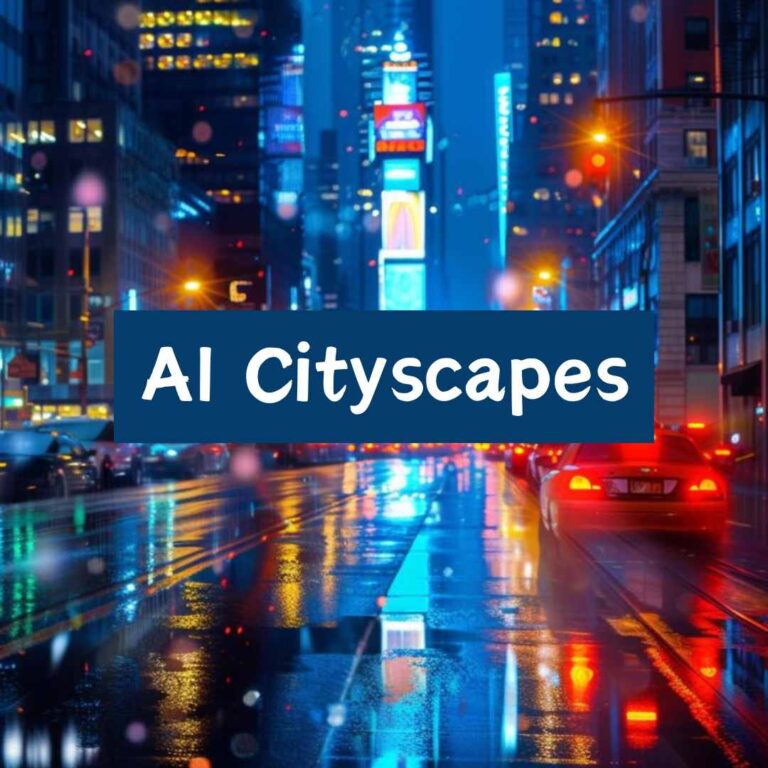Last Updated on February 12, 2024 by Dee
Diving into the world where AI meets brushstrokes wasn’t something I saw coming. The allure of what tech could do caught my eye, and before I knew it, I was deep into how AI could add an extra layer, not just match, my creative flair. This mix—tech’s edge with the soul of traditional art—has cracked open a whole new universe of possibilities, reshaping my art journey in ways I hadn’t imagined.
Today, I’m peeling back the curtain on my process for crafting cityscapes that aren’t just digital creations but are imbued with a personal touch. It’s about marrying the meticulousness of technology with the warmth that comes from the human spirit. Join me as I walk you through this exciting fusion!
How I create my ai cityscapes
My process starts with an idea, often inspired by city scenes or futuristic visions. I use Midjourney V6 to create initial images based on these ideas. These first pictures are just a starting point. Then, I move to Procreate and Photoshop, where I manually add depth, texture, and details that the AI can’t.
The work doesn’t stop there. I often take these edited images and run them through Midjourney again. This cycle of editing and reprocessing helps push my creativity further.
This process is a real collaboration between me and the AI. It’s about using technology to expand what’s possible in art, mixing traditional techniques with new tools. It shows that art is constantly evolving, and it’s the human element—our ideas and emotions—that really brings it to life.
Conceptualization: The Spark of Inspiration
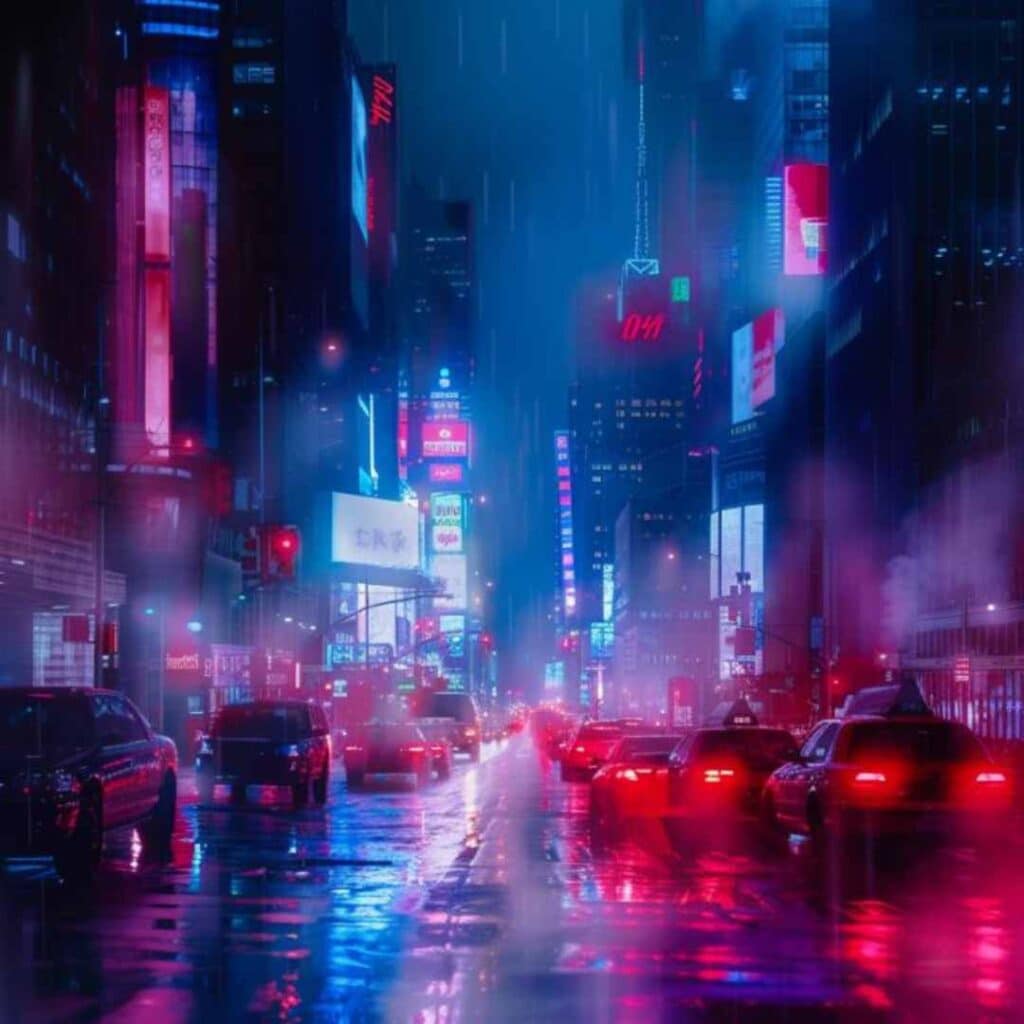
Every piece begins with a spark—an idea that often comes from observing the world around me or imagining what the future might hold. Whether it’s the bustling streets of a city I’ve visited or a dystopian vision of what’s yet to come, these initial thoughts serve as the foundation for my work. I spend time sketching, jotting down notes, and collecting images that capture the essence of what I’m aiming to create. This phase is crucial, as it sets the direction for the entire project.
Crafting the Prompt: Dialogue with Midjourney

With a clear concept in mind, I turn to Midjourney V, an AI tool that transforms my ideas into visual realities. This step is both technical and creative. Developing the right prompt involves a delicate balance of specificity and openness, allowing the AI to interpret my vision while still leaving room for unexpected surprises. I experiment with different phrasings and settings, each iteration bringing me closer to the image in my mind’s eye. This process of trial and error is not just about guiding the AI but also about refining my own understanding of what I want to achieve.
Bringing AI Art to Life: The Manual Touch
Once I have a base image from Midjourney, the real hands-on work begins. Importing the AI-generated canvas into Procreate and Photoshop, I start the meticulous process of editing. Here, I might adjust colors, add fine details, or alter the composition to better reflect my original vision. This stage is where my personal touch comes into play, blending traditional art techniques with digital tools. It’s a reminder that, despite the initial AI generation, the artwork is deeply personal and infused with human creativity.
A Dynamic Collaboration: Back to Midjourney
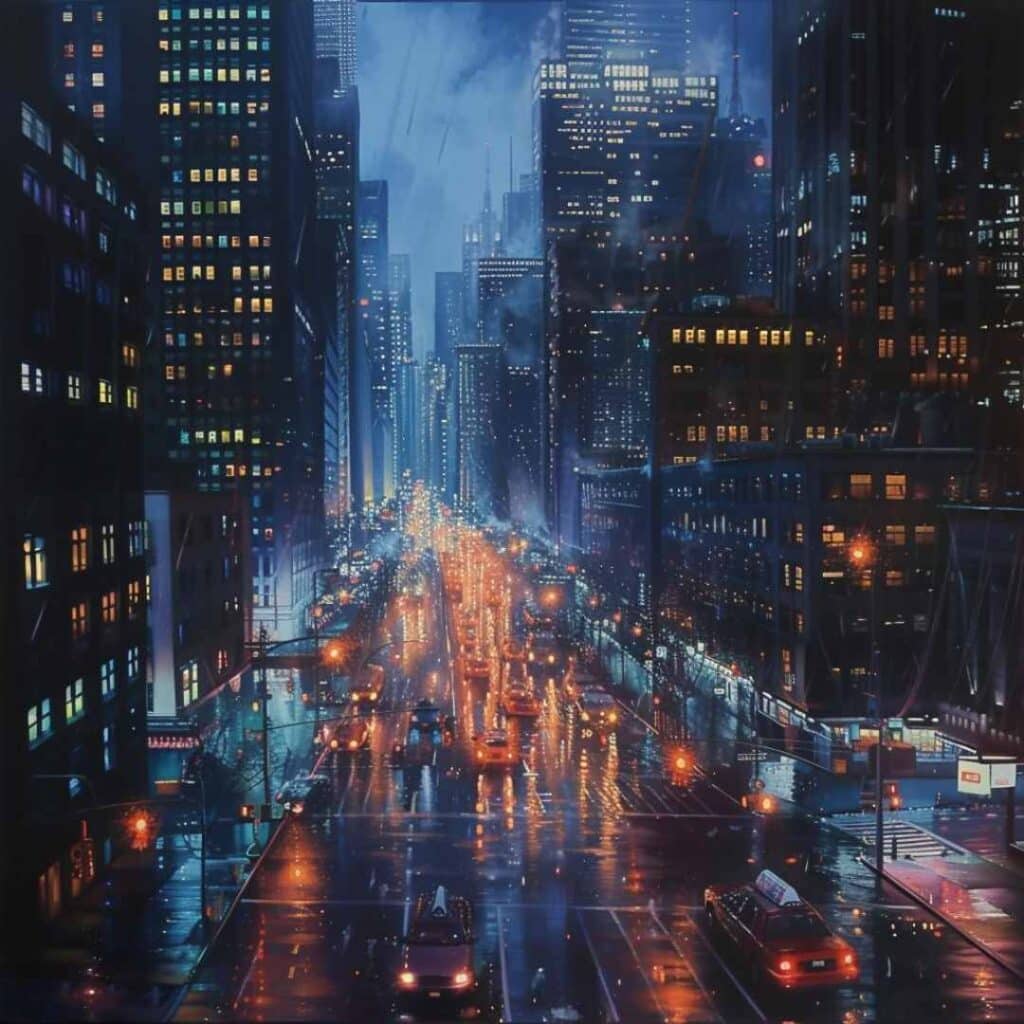
Interestingly, the process doesn’t always stop with manual adjustments. Sometimes, I take the enhanced image and feed it back into Midjourney. This back-and-forth can lead to new layers of complexity and depth, creating a piece that’s truly collaborative. It highlights the dynamic potential of AI as a partner in the creative process, capable of contributing to art in ways that are continually surprising.
Beyond the Canvas

This iterative process—conceptualizing, prompting AI, manually refining, and sometimes returning to AI—represents a new frontier in art. It’s a journey that blurs the lines between the artist’s vision and the machine’s input, resulting in creations that are both uniquely personal and collaboratively generated. Through this post, I’ve shared a glimpse into my method, hoping to illuminate the nuanced relationship between traditional artistry and artificial intelligence. This approach not only challenges preconceived notions of what art can be but also opens up a world of possibilities for creative expression in the digital age.
The Debate: Is It Really Art?
One of the most intriguing aspects of incorporating AI into my art process has been navigating the ongoing debate surrounding AI-generated art: Can creations that involve algorithms and machine learning truly be considered art? This question sparks intense discussions among artists, critics, and enthusiasts alike, with opinions divided on the legitimacy and authenticity of AI-assisted creations.

The Essence of Creativity
At the heart of the debate is the concept of creativity. Traditional views on art emphasize the unique expression and emotional depth conveyed by the human hand and mind. Critics argue that AI, lacking consciousness and emotional experiences, cannot create art with the same depth or intention as a human artist. However, my journey has led me to see AI not as a replacement for human creativity but as a tool that expands the canvas of possibility.
My Perspective: A Collaborative Process
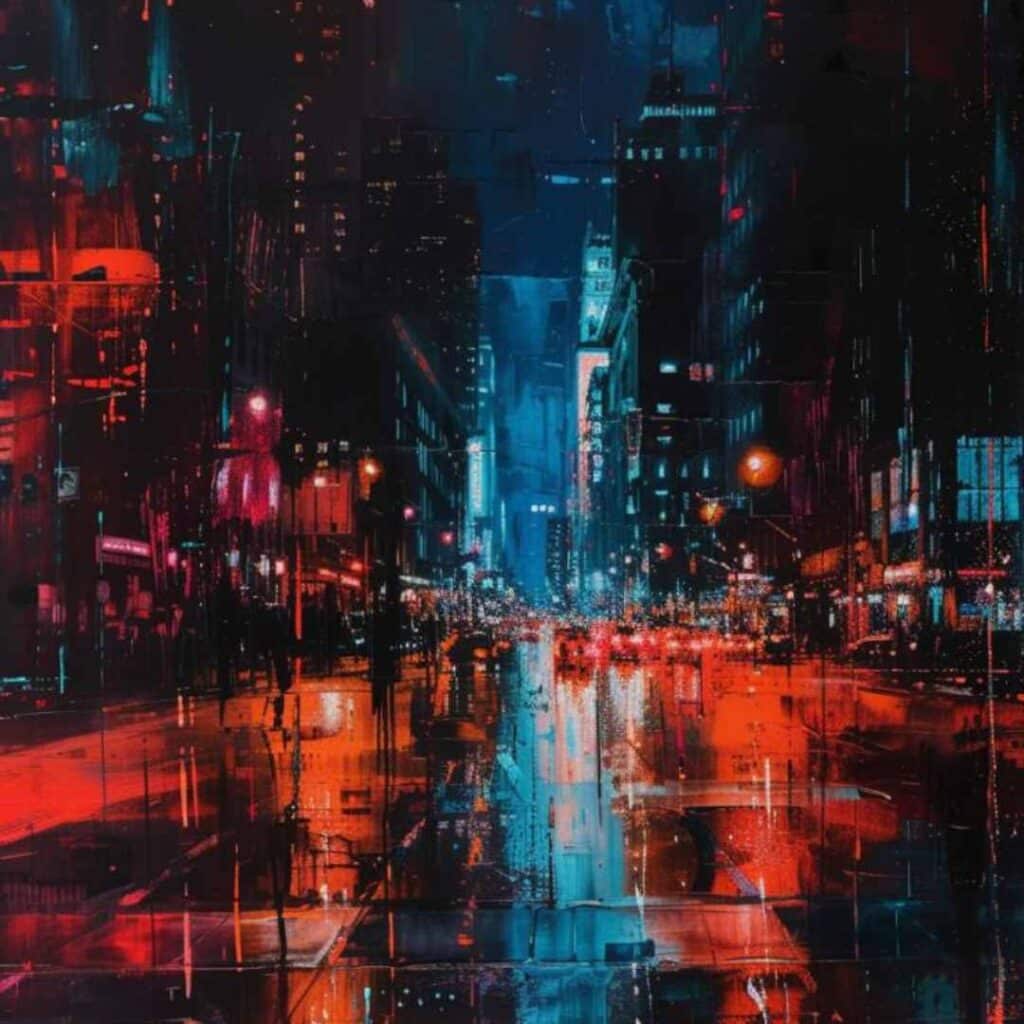
In my experience, the art I create with AI is deeply personal and involves significant human intervention and creative decision-making. From conceptualizing the initial idea to refining the AI-generated images with manual techniques, my involvement is integral to the final piece. This collaborative process between human and machine challenges the notion that art must be solely the product of human effort. Instead, it proposes a new definition of art that embraces innovation and technology.
The Role of the Artist
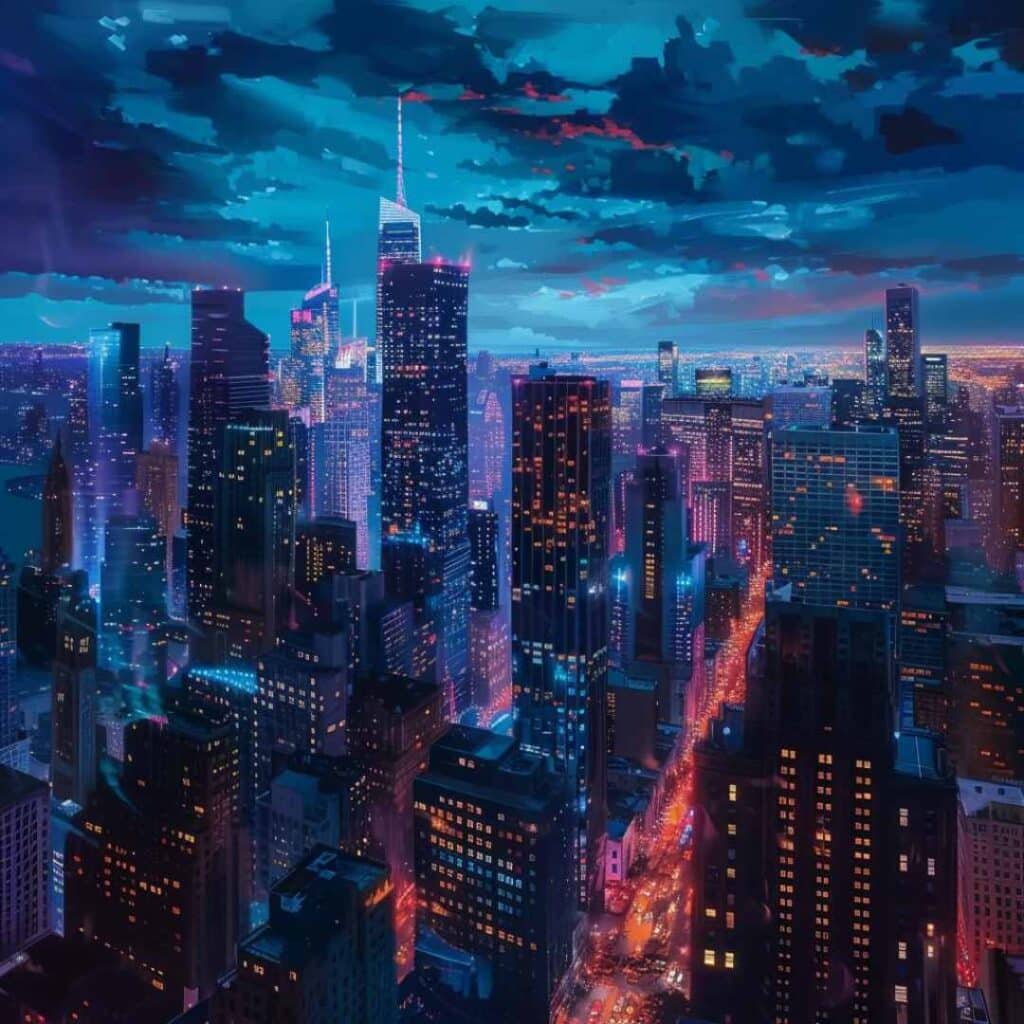
The use of AI in art-making raises important questions about the role of the artist. In my process, the artist is both a director and a collaborator, guiding the AI with carefully crafted prompts and then engaging in a hands-on manner to shape the final artwork. This approach underscores the artist’s creative vision and the personal touch that goes into each piece, affirming that AI-generated art is indeed a legitimate form of artistic expression.
Expanding the Definition of Art
Ultimately, the debate over AI and art highlights the evolving nature of creativity and expression. As technology advances, the boundaries of what constitutes art are pushed and expanded. By embracing AI as a tool and collaborator, artists can explore uncharted territories of expression, creating works that resonate with both the complexities of the digital age and the timeless pursuit of beauty and meaning.
Whether one believes AI-generated art is “real” art may depend on one’s definition of art itself. In my view, the collaboration between artist and AI represents a new frontier in creative expression, one that holds the potential to redefine art for the digital era. It’s a testament to human ingenuity and the endless quest for innovation—a journey that, for me, is undeniably rooted in the essence of what it means to create.

Inspiration for Others
As we navigate the evolving landscape of art and technology, one of my goals is to inspire others to explore the potential of AI in their creative endeavors. The fusion of AI and traditional art-making methods opens up a new realm of possibilities, offering artists a unique way to expand their creative horizons.
Embracing AI as a Muse
AI-generated art can serve as a powerful source of inspiration. The unexpected patterns, colors, and forms produced by AI can spark ideas that might not have occurred through traditional brainstorming or sketching. I encourage artists to view AI-generated images not just as end products but as starting points for further exploration and interpretation through their preferred mediums.

Experimentation and Learning
The journey into AI art is one of experimentation and continuous learning. It involves mastering new tools, understanding the nuances of prompt engineering, and exploring the balance between digital and manual techniques. This process can be incredibly rewarding, offering personal growth and the joy of creating something truly unique.
Building a Community
Sharing your journey and creations can help build a community of like-minded artists who are also exploring the intersection of AI and traditional art. Through social media, exhibitions, or online forums, we can share techniques, insights, and inspiration, fostering a supportive environment for innovation.
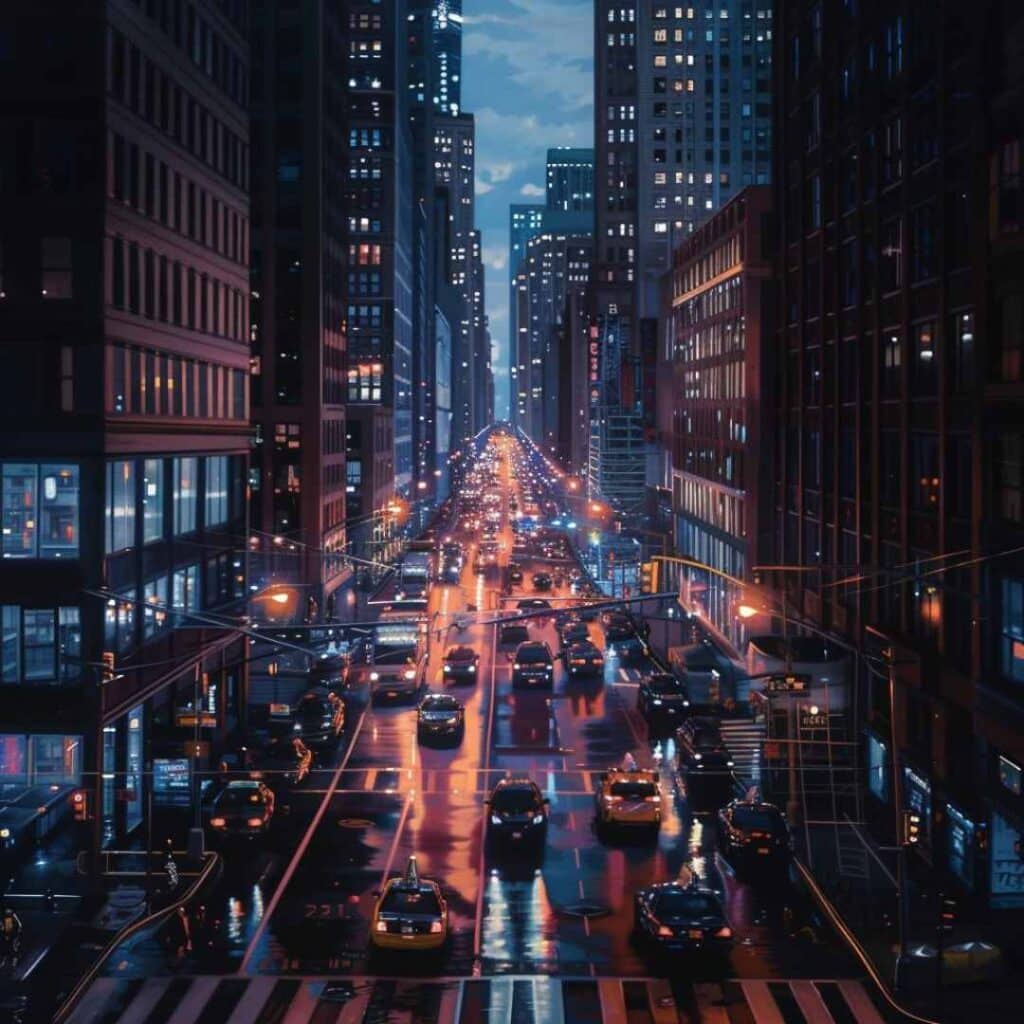
Closing Thoughts
Reflecting on my journey with AI-generated cityscapes, I’m reminded of the endless potential for creativity and innovation. This exploration has not only expanded my artistic toolkit but also challenged me to think deeply about the nature of art and creativity in the digital age.
A New Frontier in Art
The integration of AI into the art-making process represents a new frontier, one that blurs the lines between technology and traditional artistic expression. It’s a testament to the boundless possibilities that emerge when we embrace new tools and perspectives, challenging us to redefine what it means to create.
The Artist’s Role in the Digital Age
As artists, our role is to explore, question, and push the boundaries of what art can be. The use of AI in creating art is just one example of how technology can augment and enhance our creative expression. It’s a reminder that art is a living, evolving practice that reflects the times we live in.
An Invitation to Explore
To those curious about the intersection of AI and art, I extend an invitation to explore this exciting terrain. The journey is as much about discovering new ways to create as it is about understanding ourselves and our place in a rapidly changing world. Whether you’re an artist, a technologist, or simply someone who appreciates the beauty of innovation, there’s a place for you in this conversation.
The future of art is bright and boundless, limited only by our willingness to experiment and our capacity to dream. Let’s embrace the unknown, challenge our preconceptions, and create with curiosity and courage. The canvas of the digital age awaits, and I can’t wait to see what we’ll create together.
Other articles you may enjoy…
